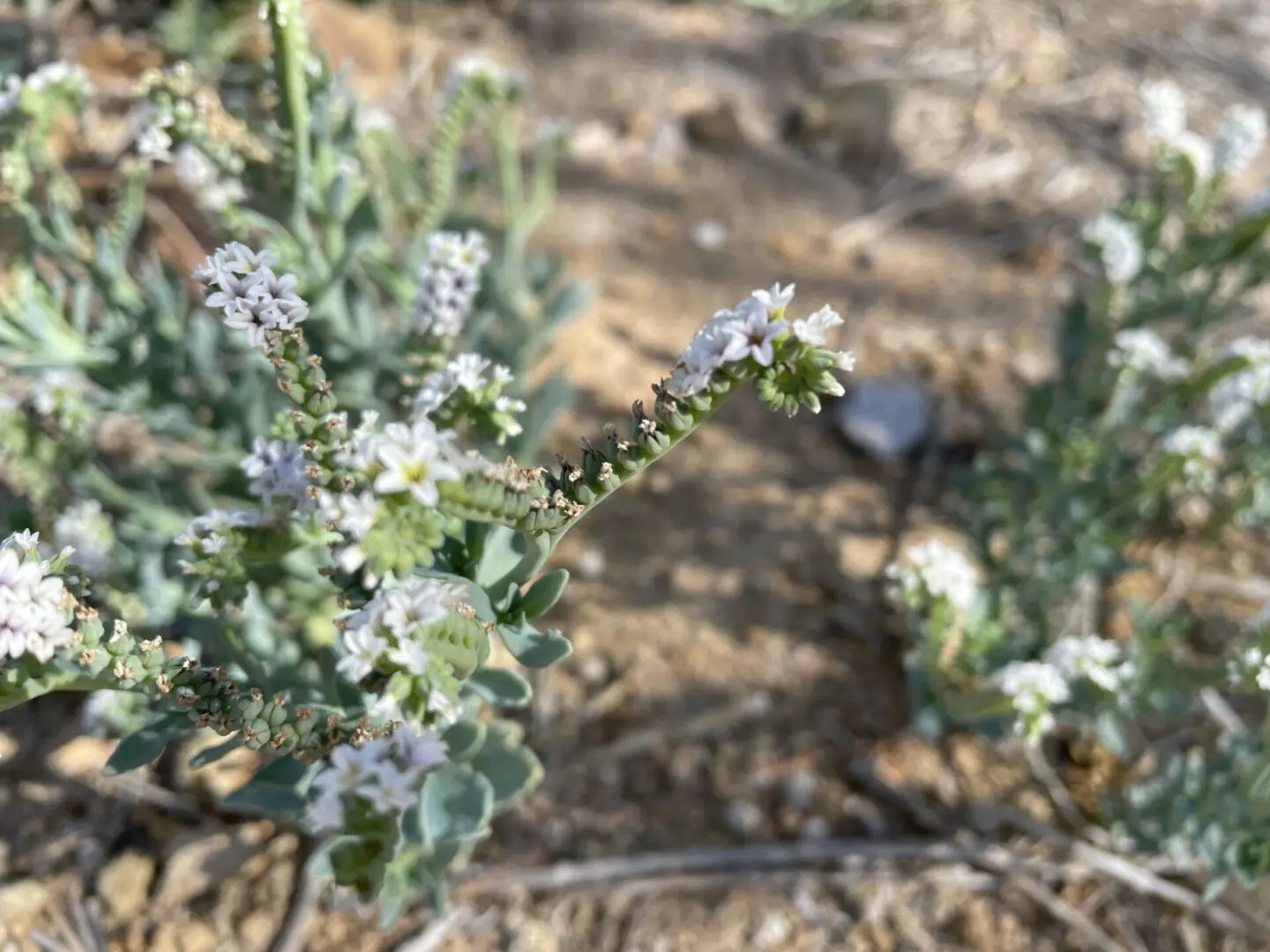The Salt Heliotrope

WHAT WETLANDS PARK PLANT IS NICKNAMED AFTER A VENOMOUS PREDATORY ARACHNID?
Look at this perky, flowering plant! When walking the green “riparian” grounds of Clark County Wetlands Park, you’re bound to stumble upon salt heliotrope ((Heliotropium curassavicum, a.k.a. “Scorpion Flower”). This low but erect, 15-inch or so tall plant flowers from March to October and is easily identified by its curled, coiling double rows of tiny, bell-shaped flowers resembling the tail of a scorpion, hence the regional moniker of “scorpion tail” or “scorpion flower.”
The plant prefers alkaline soils and is native to much of the Americas, from Canada to Argentina, including the West Indies and Hawaii. Besides being known by our local nickname, the plant is also called “seaside heliotrope,” “monkey tail,” “quail plant,” and “Chinese parsley.” In Latin American Spanish, it is known as “cola de mico,” “cola de gama,” or “rabo alacrán.” It is called “kīpūkai” in Hawaii.
Leaves are thick, fleshy, and essentially stalkless, grey-green or slightly bluish in color, and hairless. Leaf edges may be slightly undulating. Leaves grow all along the stems, but those near the base are generally reduced in size. Plant is a perennial that spreads by shoots from its wide root system. The plant is also self-seeding.
Each tiny flower is white with five rounded lobes and a purple or yellow throat. The flowers are butterfly magnets–blue butterflies (family Lycaenidae), including the western pygmy blue, “whites” (family Pieridae), like the cabbage, Becker’s and checkered white butterflies like to sip nectar from the plants, too. And, they are a nectar plant for monarch (Danaus plexippus) butterflies and are invaluable to native bees. Each flower produces a fruit that separates into four nutlets. Park birds, such as the Gambels quail, favor the seeds (hence the “quail plant” moniker).
In addition to being nice to look at, the plant also has medicinal purposes. Its dried roots can be ground to a powder and applied to sores and wounds. However, like our native scorpions which can inflict a toxic poison with their sting, salt heliotrope contains pyrrolizidine alkaloids that are poisonous to humans and livestock. The chemical causes cumulative damage to the liver when eaten over time. It is believed that the production of the alkaloids was originally developed by the plant to foil insect pests. Apparently, it worked, to a degree, but the bugs developed workarounds, so now varieties of mealy bugs, spider mites, and aphids all eat it!
– By Constance Carlson
Please enjoy this YouTube video:
Salt Heliotrope, Heliotropium curassavicum, San Diego, California
